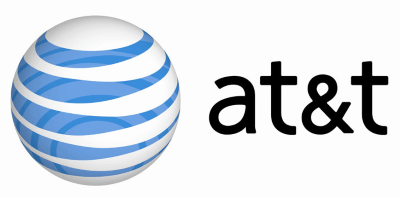
Gov. Brown
Within hours of California’s Gov. Jerry Brown signing the state’s sweeping new net neutrality protection law, Attorney General Jeff Sessions filed a federal lawsuit to block the law, calling it an illegal attempt to bypass the Federal Communications Commission and its chairman Ajit Pai, which the Trump Administration argues has the sole authority over the nation’s internet service providers.
“States do not regulate interstate commerce — the federal government does,” Sessions said in a statement. “Once again the California legislature has enacted an extreme and illegal state law attempting to frustrate federal policy. The Justice Department should not have to spend valuable time and resources to file this suit today, but we have a duty to defend the prerogatives of the federal government and protect our Constitutional order. We will do so with vigor. We are confident that we will prevail in this case—because the facts are on our side.”
The Department of Justice claimed in its lawsuit that California’s open internet protection legislation was blatantly against the public interest because it imposes a host of rules on the conduct of companies like AT&T, Verizon, Comcast, and Charter that are contrary to the administration’s deregulation principles.
“[This new law] unlawfully imposes burdens on the federal government’s deregulatory approach to the internet,” the lawsuit stated. “The United States concluded that California, through Senate Bill 822, is attempting to subvert the federal government’s deregulatory approach by imposing burdensome state regulations on the free internet, which is unlawful and anti-consumer.”
FCC Chairman Ajit Pai wholeheartedly supports the lawsuit, releasing his written comments praising it as part of the Justice Department’s media release.
 “I’m pleased the Department of Justice has filed this suit,” Pai wrote. “The internet is inherently an interstate information service. As such, only the federal government can set policy in this area. And the U.S. Court of Appeals for the Eighth Circuit recently reaffirmed that state regulation of information services is preempted by federal law.”
“I’m pleased the Department of Justice has filed this suit,” Pai wrote. “The internet is inherently an interstate information service. As such, only the federal government can set policy in this area. And the U.S. Court of Appeals for the Eighth Circuit recently reaffirmed that state regulation of information services is preempted by federal law.”
“Not only is California’s internet regulation law illegal, it also hurts consumers,” added Pai. “The law prohibits many free-data plans, which allow consumers to stream video, music, and the like exempt from any data limits. They have proven enormously popular in the marketplace, especially among lower-income Americans. But notwithstanding the consumer benefits, this state law bans them.”
The Trump Administration fears the new California law will set a de facto standard of net neutrality protection across all 50 states, because California’s market size makes it difficult for telecommunications companies to apply one standard in California, while maintaining different standards everywhere else.

Sessions
The California net neutrality law restores most of the rules ISPs followed during the Obama Administration, including bans on blocking or throttling internet content and outlawing paid prioritization schemes, which would allow ISPs to charge content providers extra to guarantee their internet traffic was prioritized over other traffic. The new law also covers interconnection agreements between ISPs, which are cited as largely responsible for traffic slowdowns on websites like Netflix and YouTube. Some ISPs have used these traffic exchanging agreements as leverage to seek compensation from internet content companies in return for higher capacity, less congested connections between a content provider and the ISP’s customers. The FCC did not address this issue in its own, now repealed, net neutrality rules.
California’s attorney general promised to defend the new law in court and oppose the Justice Department lawsuit.
“We will not allow a handful of power brokers to dictate sources for information or the speed at which websites load,” said Xavier Becerra. “We remain deeply committed to protecting freedom of expression, innovation and fairness.”


 Subscribe
Subscribe AT&T has laid off more than 16,000 employees since 2011, eliminating thousands of customer service positions while transferring others to cheap offshore call centers where some employees earn less than $2 an hour.
AT&T has laid off more than 16,000 employees since 2011, eliminating thousands of customer service positions while transferring others to cheap offshore call centers where some employees earn less than $2 an hour.



 (Reuters) – Comcast Corp offered $65 billion on Wednesday for 21st Century Fox’s media assets, emboldened by AT&T prevailing over the Trump administration’s attempt to block a merger with Time Warner, Inc..
(Reuters) – Comcast Corp offered $65 billion on Wednesday for 21st Century Fox’s media assets, emboldened by AT&T prevailing over the Trump administration’s attempt to block a merger with Time Warner, Inc.. Shares of Comcast, Fox and Disney were barely changed in after-hours trade.
Shares of Comcast, Fox and Disney were barely changed in after-hours trade. AT&T has won its $85 billion bid to acquire Time Warner, Inc., overturning Justice Department opposition in a court case and completely rejecting allegations the merger was anti-consumer and would raise prices by suppressing competition. The favorable decision is expected to signal the business community the time is right for several more multi-billion dollar media mergers.
AT&T has won its $85 billion bid to acquire Time Warner, Inc., overturning Justice Department opposition in a court case and completely rejecting allegations the merger was anti-consumer and would raise prices by suppressing competition. The favorable decision is expected to signal the business community the time is right for several more multi-billion dollar media mergers.